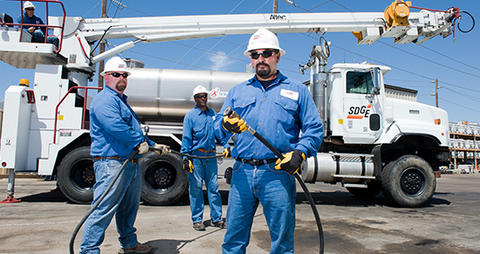How Energy Pricing is Determined
Aside from weather, usage and energy market conditions, your energy bill is impacted by regulatory proceedings at the California Public Utilities Commission (CPUC). SDG&E, alongside consumer advocates and other key stakeholders, participates in numerous CPUC proceedings throughout the year.

SDG&E's Energy Pricing
SDG&E's energy pricing - also called rates - and any fees paid by SDG&E customers are regulated and approved by multiple public agencies and with the participation of many stakeholders in a transparent, thorough review process.
The most prominent agency is the California Public Utilities Commission (CPUC). This agency consists of five people appointed by the governor. Any time SDG&E wants to start a major project, upgrade systems or change any rates, we must submit a detailed application to the CPUC. We’re required to demonstrate how the request fits within California’s energy future and how it could affect annual or multi-year costs and rates for customers.
Those applications then go through a rigorous review process by the CPUC and other interested stakeholders to ensure that SDG&E is making prudent and fiscally responsible decisions — for our individual customers and community at large.
After the review process, the CPUC issues a decision based on what is fair and reasonable for customers. We then incorporate any needed changes from the CPUC ruling, whether it's rates, or other revisions to what is proposed in the application.
For example, every four years SDG&E files a General Rate Case (GRC) request. This determines the amount of money needed for operational expenses like costs for building, operating and maintaining equipment including substations, distribution poles and transformers, as well as SDG&E's highly-skilled workforce. Other proceedings include Energy Resource Recovery Account (ERRA), which covers fuel and purchased power costs such as electricity, and a Cost of Capital proceeding which sets forth the rate of return the company can earn on its capital investments. All of these must be approved by the CPUC before SDG&E charges its customers.
In addition to the CPUC, the Federal Energy Regulatory Commission (FERC) approves the retail transmission portion of rates.
Additional oversight
While the CPUC and FERC regulate rates, there are additional agencies that provide oversight of SDG&E, the power grid, and the state’s energy policies:
- California Air Resources Board (CARB)
- California Energy Commission (CEC)
- California Independent System Operator (CAISO)
- Office of Energy Infrastructure Safety
